#13 – Puzzling World, Wanaka, New Zeland
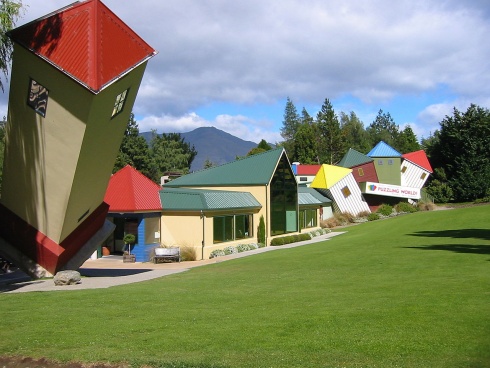
Stuart Landsborough’s Puzzling World is a tourist attraction near Wanaka, New Zealand. It started out as just a single level maze in 1973, but over the years expanded to add overbridges to the maze design (thus creating the world’s first 3-D maze), a large “puzzling café” where guests could try out several puzzles, five large rooms of optical illusions, the Leaning Tower of Wanaka (which has a backwards clock that was started on the eve of the new millennium) and other attractions (such as the Roman Bathrooms) that ascribe to their theme of “puzzling eccentricity”.
#12 – Upside Down House, Gettorf, Germany
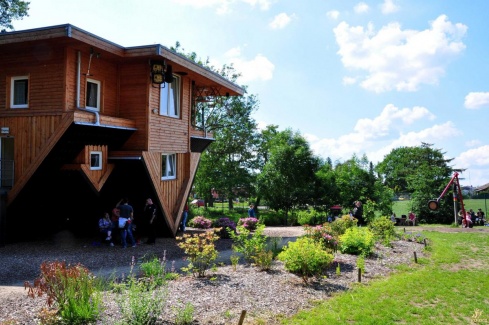
This upside down house was built in March 2010 for a local zoo in Gettorf, Germany.
#11 – Cybertecture Egg, Mumbai, India
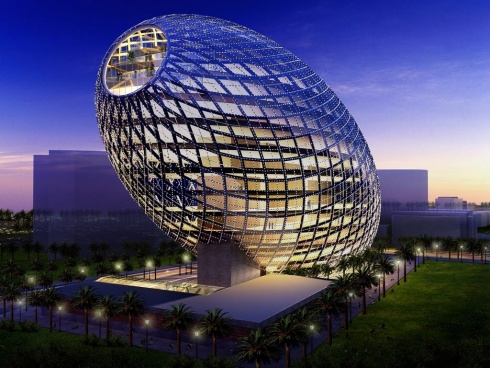
A new form of architecture, commissioned by Vijay Associates (Wadhwa Developers) and designed by James Law Cybertecture International and Ove Arup, is typified by new intangible materials of technology, multimedia, intelligence and interactivity to create an awe-inspiring landmark for the city of Mumbai and for India in the 21st Century.
#10 – The Teapot Dome, Zillah, USA
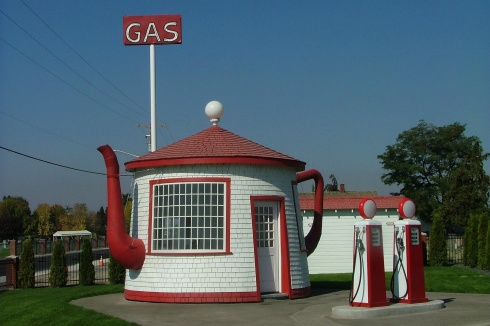
The Teapot Dome Service Center located in Zillah, Washington, and in 1985 listed on the U.S. National Register of Historic Places.
#9 – Kunsthaus Graz, Austria

The Museum of Contemporary Art in Graz was built in 2003. Designed by architects Peter Cook and Colin Fournier in an innovative style known as blob architecture, focusing on the creation of “living” structures similar to a huge drop or bubble. Though it looks like an ameba, it’s called “Friendly Alien”.
#8 – Dog Bark Park Inn, Idaho, USA
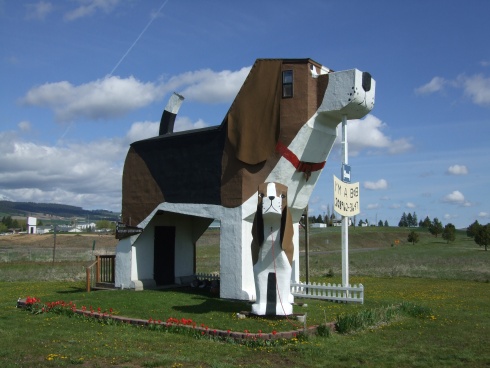
The Dog Bark Park Inn is a hotel located in the US state of Idaho. The hotel is built in the shape of a beagle, making it a famous landmark in the state. It is colloquially known as Sweet Willy by local residents. The hotel, which is located in north central Idaho, is a two-bedroom B&B which also features dog-themed contents.
#7 – The Spittelau Waste Incineration Plant, Vienna, Austria
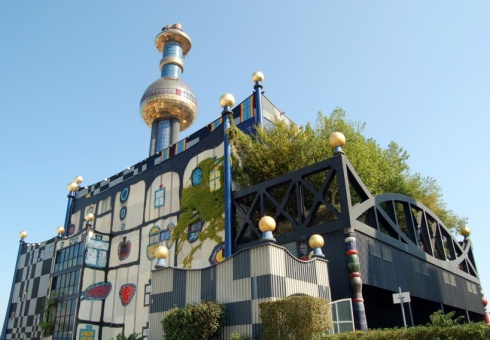
The Spittelau Incinerator is a waste-to-energy incinerator in Vienna, Austria. Originally completed in 1971 the building was damaged by fire and in 1987 the elevations were redesigned by architect and artist Friedensreich Hundertwasser.
#6 – Ripley’s Believe It or Not! Atlantic City, NJ, USA
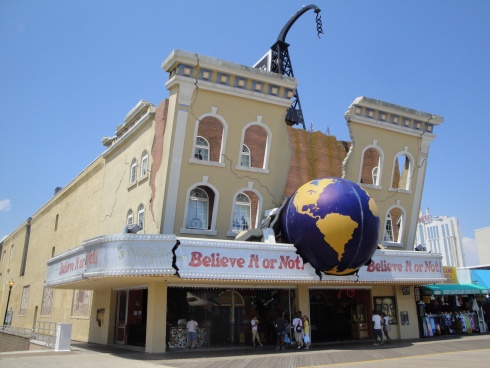
As of 2010, there are over 30 “Ripley’s Believe It or Not!” Museums, or more correctly Odditoriums (from Oddity – someone or something strange or unusual) around the world. “Ripley’s Believe It or Not!” is a franchise, founded by Robert LeRoy Riply (1890-1949), an American cartoonist, entrepreneur and amateur anthropologist. The first Ripley’s Odditorium” collection was displayed during the run of the World’s Fair in 1933 in Chicago, and in 1950, a year after Ripley’s death, the first permanent Odditorium opened in St. Augustine, Florida.
#5 – Tianzi Hotel, Langfang, China
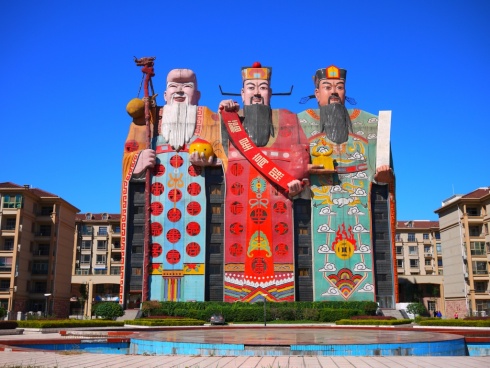
This ten-storey building in the shape of three huge Heroes is nothing but the Tianzi Hotel that was built in 2000 in the Chinese city of Langfang, Hebei Province, between Beijing and Tianjin.
#4 – Robot Building, Bangkok, Thailand
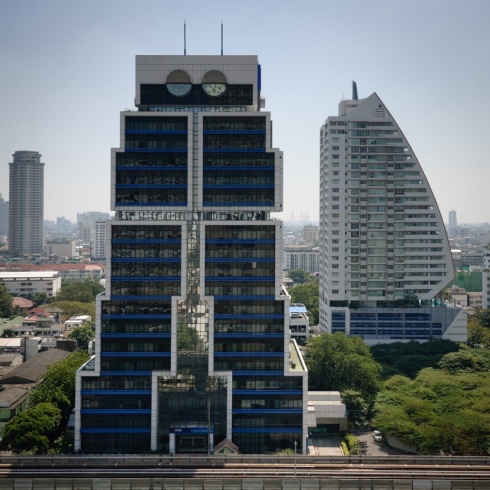
The Robot Building, located in the Sathorn business district of Bangkok, Thailand, houses United Overseas Bank’s Bangkok headquarters. It was designed for the Bank of Asia by Sumet Jumsai to reflect the computerization of banking; its architecture is a reaction against neoclassical and high-tech postmodern architecture. The building’s features, such as progressively receding walls, antennas, and eyes, contribute to its robotic appearance and to its practical function. Completed in 1986, the building is one of the last examples of modern architecture in Bangkok.
#3 – The Torre Galatea, Figueres, Catalonia, Spain
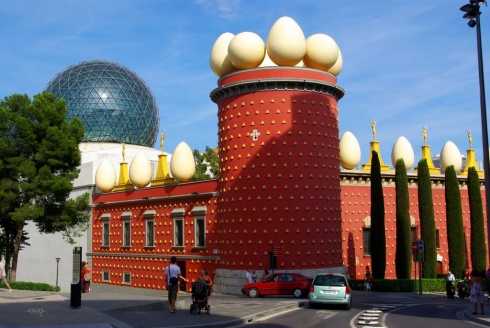
The Dali Theatre and Museum, Torre Galatea in Figueres, Spain – the home town of famous artist Salvador Dali. It has a very unusual architecture with several egg shaped sculptures on its roof. Dali had spent later part of his life in Torre Galatea, which he had named after his wife Gala.
#2 – Wall House, Odessa, Ukraine
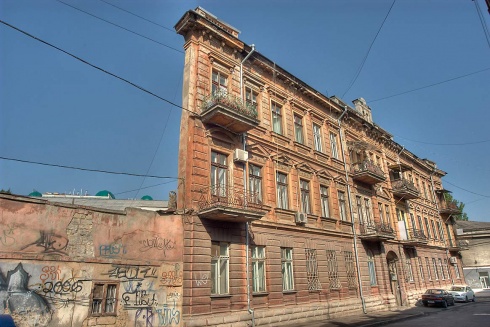
Wall House was built about 150 years ago. At first it seems to be built only for thin people, but in fact the secret of architectural deception was revealed: the back wall of the house is at a sharp angle, it is directly adjacent to a facade, and, as a matter of fact, the house has a triangular shape.
#1 – Museum of Contemporary Art, Niteroi, Brazil
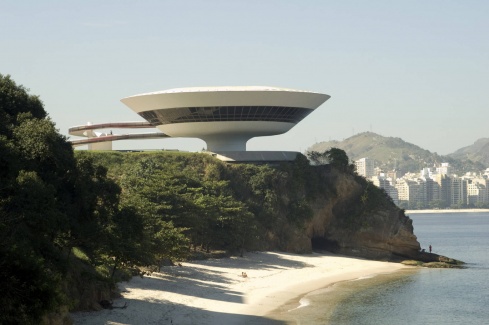
Designed by Oscar Niemeyer with the assistance of structural engineer Bruno Contarini, who had worked with Niemeyer on earlier projects, the MAC-Niterói is 16 meters high; its cupola has a diameter of 50 metres with three floors. The museum projects itself over Boa Viagem (“Bon Voyage,” “Good Journey”), the 817 square metres (8,790 sq ft) reflecting pool that surrounds the cylindrical base “like a flower,” in the words of Niemeyer.
